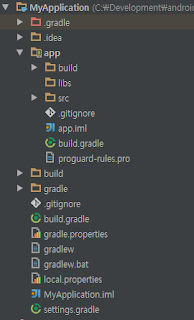

With Android Studio running, close any open projects to return to the Welcome to Android Studio dialog. gradle Folder to Another Disk?Īndroid Studio has a setting that can be changed so that Gradle can be located on another drive. This user directory is where the Windows. So a user called John Doe would have a folder at C:\Users\John Doe. The default location for the files for a Windows user is under the Users directory on the C: drive. It is not uncommon for a computer to have a small Solid State Drive (SSD) for the operating system (OS), usually the C: drive, and a larger second drive, usually D:, for data and large programs. This means programs and files may need to be installed and run from another drive. On some Windows computers the C: drive may be low on space. if the app project files are on another drive). gradle directory is to try and keep the build process all contained in one location (e.g. gradle directory can grow to several gigabytes in size as Studio and Gradle gets updates. This can be required when a disk drive runs low on space. gradle, used by Android Studio, from the default location to another drive. This article is about moving the Gradle directory. Please follow the instructions on the Hermes page to learn how to enable/disable Hermes.How to Move Gradle Folder for Android Studio

With Hermes enabled, you can use the JavaScript debugger in Flipper to directly debug your JavaScript code.

We highly recommend using Hermes in your application. Hermes is enabled by default, and you have to explicitly disable it if you want to use JSC.

Hermes is an open-source JavaScript engine optimized for React Native. You can find instructions on how to upgrade in the page upgrading to new versions. This guide is written with the expectation that you’re using the latest React Native release. React Native released the support for the New Architecture with the release 0.68.0. Update to the latest React Native version There are a few prerequisites that should be addressed before the New Architecture is enabled in your application. We're working on tools, templates and libraries to help you get started fast on the New Architecture, without having to go through the whole setup. Please note that this won't be representative of the final developer experience once the New Architecture is stable. Moreover, it contains several manual steps. Feel free to share your feedback on the discussion inside the working group for this page. This documentation is still experimental and details are subject to changes as we iterate.


 0 kommentar(er)
0 kommentar(er)
